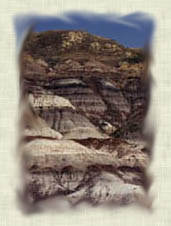
Natural Selection in action
Field observations of finches from the Galapagos
About eight months after visiting the Galapagos archipelago, Charles Darwin wrote:
-
`When I see these Islands in sight of each other and possessed of but
a scanty stock of animals, tenanted by these birds, but slightly differing
in structure and filling the same place in Nature, I must suspect they are
varieties . . . If there is the slightest foundation for these remarks the
zoology of the archipelagoes will be well worth examining: for such facts
would undermine the stability of species'.
A remarkable long-term investigation of these finches has been led by Professor Peter Grant, a zoologist at Princeton University. He has been visiting the Galapagos islands since 1973. Two resident populations of finches of Daphne Major have been the subject of careful scrutiny by Grant, his wife, Rosemary, and numerous graduate students and assistants.
The fieldwork has involved documenting the life history of every finch on the island in meticulous detail. The parents are known, and measurements are made of body dimensions, particularly body size and beak depth. The goal has been to study natural selection in action. If changes were to occur as a result of environmental pressures, the researchers had the opportunity to detect them and to investigate cause and effect relationships. A readable summary of their findings was published in Scientific American (October 1991, 60-65) with the title: `Natural selection and Darwin's finches'.
Selection pressures come from drought years and rainy years. When there is plenty of moisture, grasses grow profusely, herbs are abundant and shrubs produce copious foliage and seeds. In a drought year, everything is in short supply. In particular, the ratio of small seeds to large seeds tends to drop. This last point is relevant to the ground finches, whose beaks are adapted for eating seeds of a certain size.
In 1977 and 1982, Daphne Major had a very poor rainy season. These droughts were a disaster for the resident birds: most did not breed; those that did lost their offspring, birds died (in 1977, the medium ground finch population reduced to only 15% of their pre-drought numbers). The larger birds tended to survive and pass on their genes to the next generation.
Some birds may have emigrated rather than died, but the numbers are thought to be low. Studies of carcasses showed a tendency for small birds to die preferentially. The indications, therefore, are for droughts to select for larger birds with larger beaks.
During normal years, with a good rainy season, there is an abundance of food for every bird, and selection pressures are low. In these years, the average body size and average beak depth tends to return to normal values. Thus, over successive years, the researchers have observed an oscillation of measurable traits.
Grant and his colleagues considered whether body size and beak depth (the characters that correlated positively with survival) are heritable.
-
`This is accomplished by regressing the average of the offspring measurements
on the average of the mother's and father's measurements for as many families
as possible, a standard procedure in quantitative genetics. The hereditability
of the trait is estimated by the slope of the function, which can vary between
zero and one. This technique enabled us to estimate the hereditability of
beak depth in the medium ground finch population as 0.74. In other words,
74% of the variation in beak depth can be attributed to the additive effects
of all the relevant genes. . . Body size has a somewhat higher hereditability,
91%'.
- Selection pressures act on characters of organisms which have relevance to survival. These characters may be hereditable.
- In a relatively stable environment, changes in characters will oscillate about a mean. It is possible that, with selection pressures acting in a consistent direction, the population characters will shift so far that eventually a new sub-species or a new species will be formed.
- Natural selection is not a creative influence on organisms. It can only act on and mould what is already there.
From a creationist perspective, all finches derive from a handful of created kinds: interbreeding studies show that the finches form clearly-bounded families with hybridisation taking place within the family groupings and none occurring outside them. The field observations on Daphne Major are entirely consistent with this interpretative framework. There is no reason to doubt that speciation within an ancestral finch population has taken place over time, and that natural selection has played a role in moulding their descendants into the different genera and species that we see today.
David J. Tyler (1994)

